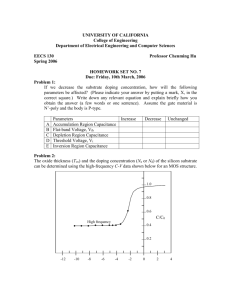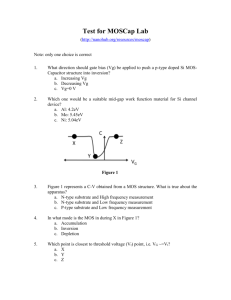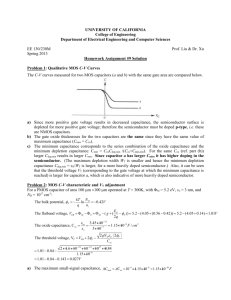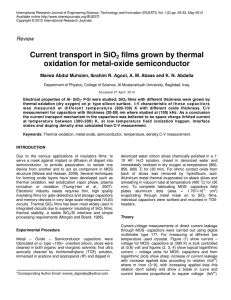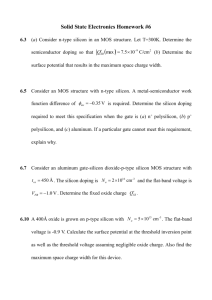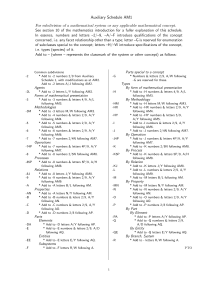Report # 1:
advertisement
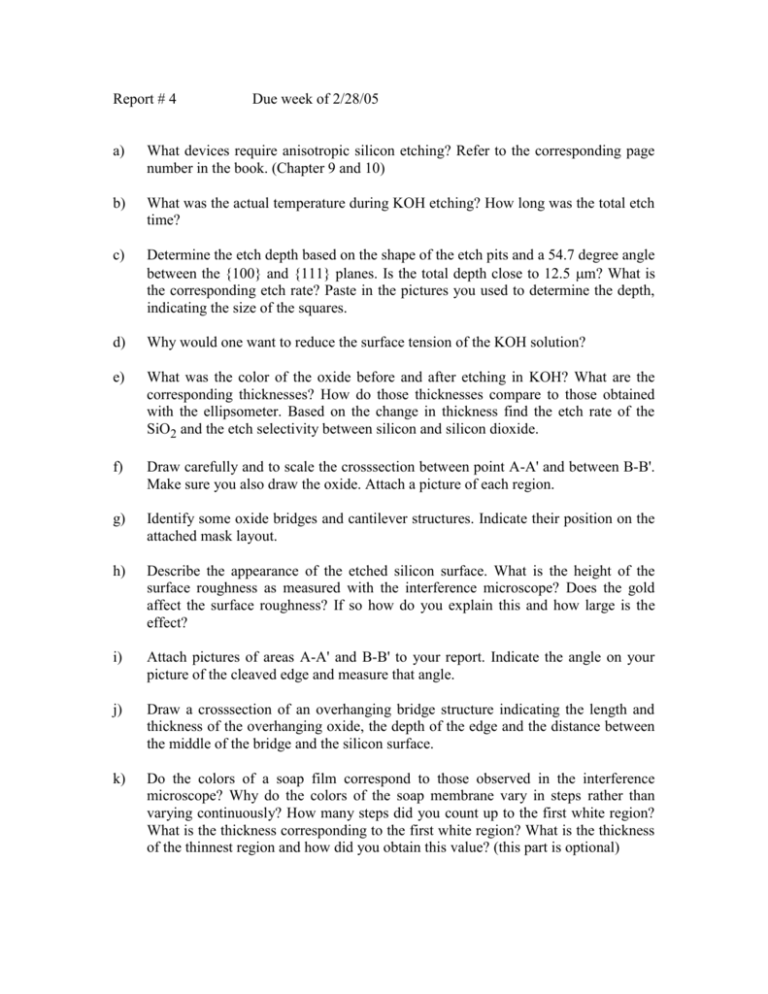
Report # 4
Due week of 2/28/05
a)
What devices require anisotropic silicon etching? Refer to the corresponding page
number in the book. (Chapter 9 and 10)
b)
What was the actual temperature during KOH etching? How long was the total etch
time?
c)
Determine the etch depth based on the shape of the etch pits and a 54.7 degree angle
between the {100} and {111} planes. Is the total depth close to 12.5 m? What is
the corresponding etch rate? Paste in the pictures you used to determine the depth,
indicating the size of the squares.
d)
Why would one want to reduce the surface tension of the KOH solution?
e)
What was the color of the oxide before and after etching in KOH? What are the
corresponding thicknesses? How do those thicknesses compare to those obtained
with the ellipsometer. Based on the change in thickness find the etch rate of the
SiO2 and the etch selectivity between silicon and silicon dioxide.
f)
Draw carefully and to scale the crosssection between point A-A' and between B-B'.
Make sure you also draw the oxide. Attach a picture of each region.
g)
Identify some oxide bridges and cantilever structures. Indicate their position on the
attached mask layout.
h)
Describe the appearance of the etched silicon surface. What is the height of the
surface roughness as measured with the interference microscope? Does the gold
affect the surface roughness? If so how do you explain this and how large is the
effect?
i)
Attach pictures of areas A-A' and B-B' to your report. Indicate the angle on your
picture of the cleaved edge and measure that angle.
j)
Draw a crosssection of an overhanging bridge structure indicating the length and
thickness of the overhanging oxide, the depth of the edge and the distance between
the middle of the bridge and the silicon surface.
k)
Do the colors of a soap film correspond to those observed in the interference
microscope? Why do the colors of the soap membrane vary in steps rather than
varying continuously? How many steps did you count up to the first white region?
What is the thickness corresponding to the first white region? What is the thickness
of the thinnest region and how did you obtain this value? (this part is optional)
Capacitance-Voltage measurement
Answer the following questions as part of your report:
a)
Why is the C-V curve of an MOS capacitor dependent on the applied voltage?
b)
Is the substrate n-type or p-type? Why?
c)
How do you explain the C-V curve (use the curve measured in the presence of
ambient light to explain the general behavior)
d)
Describe the deep depletion effect
e)
Why does the deep depletion effect not occur if the probe station enclosure is open?
f)
Why does deep depletion lead to a different C-V curve (as measured in the dark)
when the sweep direction is reversed?
g)
Do you expect the sweep direction to matter if there is ambient light? Why?
h)
Plot all three measured C-V curves on a single graph.
i)
Identify the oxide capacitance and the minimum capacitance in inversion (but
without deep depletion). From these values calculate the oxide thickness and the
doping density of the substrate. Use the C-V handout or Chapter 6.3 on the web.
j)
From the doping density, calculate the flatband capacitance and identify the
corresponding voltage (i.e. the flatband voltage) on your measured C-V curve.
Mark the calculated flatband capacitance and the corresponding flatband voltage on
your graph.
k)
Using the flatband voltage from part j), calculate the threshold voltage. Mark the
minimum capacitance at the calculated threshold voltage. Verify that this point is on
the measured C-V curve. If it is not, explain.

